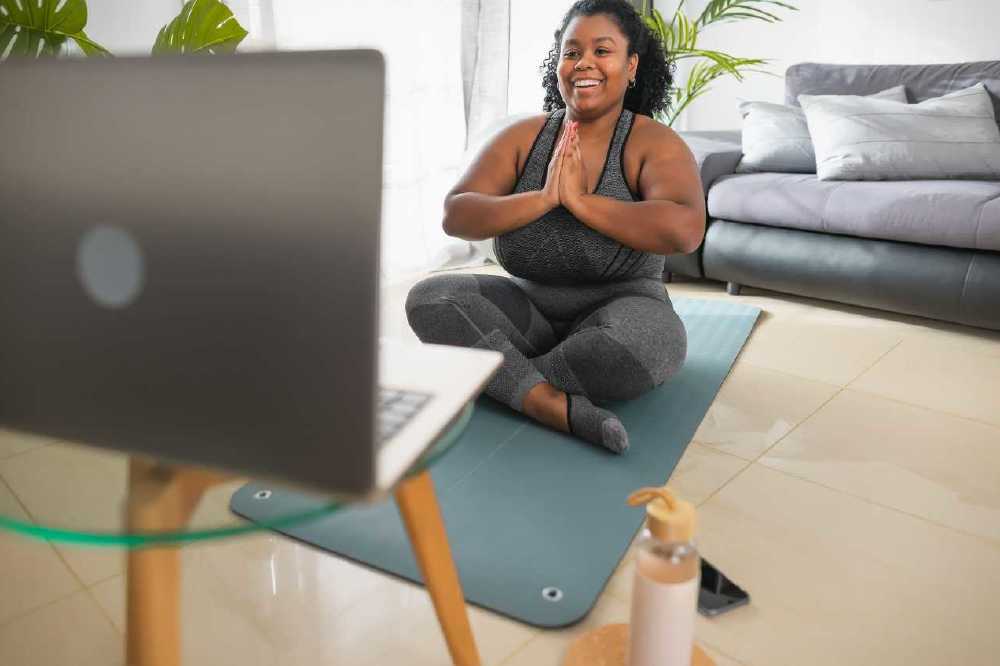By Sophie Crabtree
Yoga is a practice challenging the fitness of mind, body, and soul, which traces back to northern India over 5,000 years ago, mentioned in the Rig Veda sacred texts.

AlessandroBiascioli / Alamy Stock Photo
It has flashed and faded from fashion at various points as a Western practice, growing more popular in the 1970s and currently enjoying a resurgence.
The holistic path to better health
A study from the Evidence-Based Complementary and Alternative Medicine in 2016 found that there is a two-fold benefit: practitioners reported improved mood and mindfulness; this led to the reduction of stress and subsequent cravings for food and bingeing or other harmful coping triggers. Yoga commonly benefits those looking to form a better relationship with food and body image.
Yoga is deeply rooted in using physical exercise to open and release the seven ‘chakras’ or energy points in the body, from the crown chakra at the top of the head to the root chakra at the base of the spine. Focusing movement on specific chakras will help unblock physical or emotional symptoms, such as working on the crown chakra for migraines.
The different styles of yoga have their unique advantages, which are outlined below. Please consult a professional (be that a yoga specialist or doctor) before attending any yoga practice if you have a health condition.
Access for all
Yoga has been adapted into many different forms to suit access needs. You may wish to explore these:
Hatha
It’s advised to start here. Typically a gentler, slower style, Hatha is suitable for beginners looking for an introduction to posture, breath-work, and meditation.
This is perhaps the most relaxed style, which allows you to concentrate on being mindful and considerate of each part of your body in the long pauses with each pose or movement.
Restorative
This gets deeper. The poses can be held for up to 20 minutes, which helps participants reach a deep state of relaxation whilst increasing muscle suppleness.
In 2019, nurses working night shifts studied by the Journal of Occupational Health found that this type of restful yoga significantly reduced their psychological and physical reactions to stress.
Yin
Some people struggle to sit in one pose for a significant time, so Yin is the medium between the faster-paced yoga and restorative styles.
Here, beginners can hold for a few minutes, up to ten. This activates the parasympathetic nervous system and relieves physical and mental tension, whilst it enhances connectivity between tissues and lengthens muscles.
Ashtanga
If you’re looking to work on both endurance and flexibility, Ashtanga is an athletic, challenging form akin to dance in that you connect each pose in a set sequence.
This is a great supplementary practice if you are a distance or gymnastic-based athlete.
Bikram
Also known as ‘hot’ yoga, this practice involves around 26 postures and two breathing exercises in a room heated to 40% humidity, which imitates the Indian climate. This practice is best for aiding increased cardiovascular fitness, as the system works harder to regulate the body temperature.
Overall, the practice helps to detox the body through sweat and has favourable effects for those with type 2 diabetes.
Iyengar
Postural alignment is the key to Iyengar yoga. It focuses on the precise alignment of postures, which allows the body to unseize and unblock energy in problem areas.
The use of props such as blocks, bands, blankets, and cushions means that those who are inflexible or recovering from injury are better supported than some other kinds of yoga.
The journal Spine published a study in 2009 which reported that participants who practised at least once a week found a significant reduction in lower back pain.
Kundalini
Designed to focus on spiritual energy, or ‘shakti’ located at the base of the spine, a typical Kundalini class opens and closes with a chant or mantra to aid the activity of travelling energy from the bottom of the spine to the crown chakra.
After eight weeks of practice, participants in a Harvard Medical School study reported better sleep per night. It’s also said to improve focus and strength and lower blood pressure.
Aerial yoga
Perhaps one of the most daunting of the practices is the thought of aerial yoga, using a silk hammock or sling suspended from the ceiling for leverage, but this is great if you need support for physical movement.
Regularly, only one body part is required to lift off the ground at a time. Still, the key is trusting the sling: the practice is body inclusive when it comes to size, shape, and ability (putting no pressure on joints), as there are tonnes of modifications to the movements that your teacher can suggest.
Aerial yoga is excellent for improving core strength, alleviating neck pressure, and boosting self-confidence.
Yoga is an all-encompassing practise for those looking for mental and physical rewards for moving their body. All yoga focuses on breath work, posture, and spiritual connection to your body in every course, though exploring which would best suit your specific needs is most fruitful.
Tagged in Yoga

